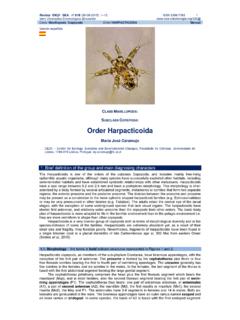Transcription of COMBINING NONOBVIOUSNESS PATENTABILITY …
1 COMBINING NONOBVIOUSNESS PATENTABILITY arguments with RULE 132 DECLARATION By Greg W. Harper Patent practitioners seek to obtain the broadest protection possible for their clients inventions, while at the same time obtaining allowance of claims that could stand up to post-issuance procedures, such as patent reexamination or patent litigation. Early in the prosecution of patent applications, such as the first and second Office Actions, practitioners at Staas & Halsey LLP generally concentrate mostly on technical differences between the claimed invention and the prior art. This includes presenting arguments on how features recited in the claims are not shown in the relied upon prior art. Anticipation rejections under 35 USC 102 and other issues, such as rejections under 35 USC 112, are generally addressed in the early stage of prosecution. Ideally, allowance can be obtained after one or two Office Actions. Furthermore, the strongest prosecution history is one concerned with the technical differences between the claimed invention and the prior art, without reliance on legal theories.
2 However, there are some cases where it is necessary to go beyond two Office Actions, particularly in crowded fields of art where finding the line between prior art and new inventions is more difficult to determine. In these cases, it is typically a question of overcoming obviousness rejections under 35 USC 103, where legal arguments can be a useful tool. Notably, the Supreme Court decision in KSR International Co. v. Teleflex Inc. appears to have lowered the standard for COMBINING references. In particular, legal arguments that contain no motivation to combine references as, for example, being in different fields are now sometimes unsuccessful. However, some legal arguments are still effective and even reinforced post-KSR. One of these is the principle that in determining obviousness, the discovery of the problem is also to be considered. Specifically, patent law permits the PATENTABILITY of inventions that appear to represent a minor advance over the prior art.
3 For example, In re Zurko, 42 USPQ2d 1476, 1479 (Fed. Cir. 1997) states, [A] patentable invention may lie in the discovery of the source of a problem even though the remedy may be obvious once the source of the problem is identified. The new USPTO 2010 Examination Guidelines Update addressing obviousness issues after KSR discusses In re Omeprazole Patent Litigation, 536 1361 (Fed. Cir. 2008): Even where a general method that could have been applied to make the claimed product was known and within the level of skill of the ordinary artisan, the claim may nevertheless be nonobvious if the problem which had suggested use of the method had been previously unknown. This can be a valuable tool to use. However, as discussed above, legal arguments are generally less persuasive than technical arguments in obtaining allowance of claims. Accordingly, when making the legal argument that a claimed invention solves a new problem, it is often helpful to combine the legal argument prepared by the patent attorney with a Rule132 Declaration executed by the inventor.
4 In the Rule 132 Declaration, the inventor would discuss the technical advantages of the invention using his or her own words. Briefly, USPTO Examination Guidelines require that Examiners give greater weight to arguments presented by experts in the field of art than to attorney arguments . Further, a Rule 132 Declaration typically contains sections which discuss the education and technical background of the inventor, which is likely to induce the respect of the Examiner. Further, certain formatting requirements must be observed, and the final, submitted Rule 132 Declaration should be edited by the patent applicant s attorney. Yet the voice of the inventor comes across in a Rule 132 Declaration, which the firm has found can be the difference in persuading an Examiner as to the allowability of claims. Therefore, if the patent applicant believes that claims are allowable and when technical arguments made by the attorney or agent have been exhausted, submitting a Response containing legal arguments prepared by the patent attorney, while concurrently submitting a Rule 132 Declaration emphasizing the technical merits of the invention, can provide the persuasiveness necessary to get a claim of a patent application allowed.
5 Finally, as the preparation of a Rule 132 Declaration is not a small undertaking, it is also advisable to contact the Examiner and attempt to determine if this method may be effective for the case in question before commencing with it.





